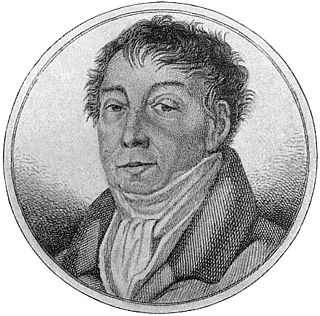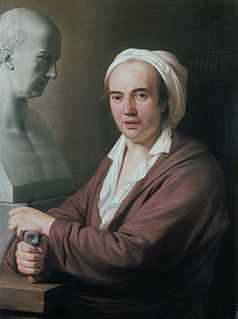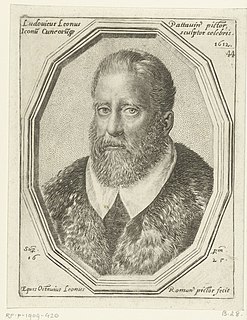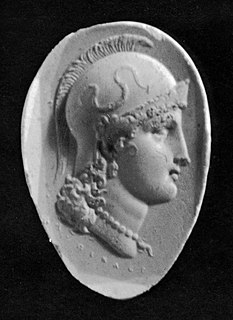Related Research Articles

Orsini is an Italian noble family that was one of the most influential princely families in medieval Italy and Renaissance Rome. Members of the Orsini family include three popes: Celestine III (1191–1198), Nicholas III (1277–1280), and Benedict XIII (1724–1730). In addition, the family included 34 cardinals, numerous condottieri, and other significant political and religious figures.

Giovanni Battista Draghi, often referred to as Giovanni Battista Pergolesi, was an Italian Baroque composer, violinist and organist. His best-known works include his Stabat Mater and the opera La serva padrona. His compositions include operas and sacred music. He died of tuberculosis at the age of 26.
Pietro Alessandro Guglielmi was an Italian opera composer of the classical period.

Luigi Marchesi was an Italian castrato singer, one of the most prominent and charismatic to appear in Europe during the second half of the eighteenth century.

Christopher Hewetson (c.1737–1798) was a neoclassical sculptor of portrait busts. Born in Ireland, he was active in Rome.
Pichler is a German surname. Notable people with the surname include:

Anastasio Martín Ignacio Vicente Tadeo Francisco Pellegrin Martín y Soler was a Spanish composer of opera and ballet. Although relatively obscure now, in his own day he was compared favorably with his contemporary, Wolfgang Amadeus Mozart, as a composer of opera buffa. In his time he was called "Martini lo spagnuolo" ; in modern times, he has been called "the Valencian Mozart". He was known primarily for his melodious Italian comic operas and his work with Lorenzo Da Ponte in the late 18th century, as well as the melody from Una cosa rara quoted in the dining scene of Mozart's Don Giovanni.
Events from the year 1791 in art.
Events from the year 1734 in art.
Giovanni Luigi Valesio, also known as Giovanni Valesio or Luigi Valesio, was an Italian painter and, most prominently, an engraver of the early-Baroque, active in his native city of Bologna, and then in Rome.

Paolo Burali d'Arezzo was an Italian priest of the Theatine Order, a bishop, and cardinal of the Roman Catholic Church. His legal skills made him a prominent figure in the law courts of Naples, and then in the councils of government as a defender of the rights of citizens. He abandoned his career to pursue a calling to the religious state, where he became a leader in the Theatine Order. Pope Pius V elevated him to the cardinalate in 1570. He was considered as a candidate for the Papacy in 1572, but his stern character did not recommend him to the electors. The new Pope, Gregory XIII, then promoted him to be the Archbishop of Naples, where he served from 1576 to 1578. After his death he was recognized as beatified and worthy of official recognition by the Church.

Lodovico Leoni was an Italian painter of the Renaissance period, mainly active in Rome. He was also a medallist, and coin-engraver. Other sources cite his name as Luigi Leone
Giovanni Antinori was an Italian neoclassical architect. Employed by the papacy, he oversaw the re-erecting of three of Rome's obelisks - the Quirinale, the Sallustian and the Montecitorio.

Antonio Francesco Gori, on his titlepages Franciscus Gorius, was a Florentine antiquarian, a priest in minor orders, provost of the Baptistery of San Giovanni from 1746, and a professor at the Liceo, whose numerous publications of ancient Roman sculpture and antiquities formed part of the repertory on which 18th-century scholarship as well as the artistic movement of neoclassicism were based. In 1735 he was a founding member of a circle of antiquaries and connoisseurs in Florence called the Società Colombaria, the predecessor of the Accademia Toscana di Scienze e Lettere la Colombaria, to foster "not only Tuscan Poetry and Eloquence, or one faculty only; but almost all the most distinguished and useful parts of human knowledge: in a word, it is what the Greeks called Encyclopedia".

Luigi Pichler was a German-Italian artist in engraved gems.
Anton Pichler was a Tyrolean goldsmith and artist of engraved gems, and the son of a doctor.

Giacomo Domenico Mario Antonio Pasquale Giuseppe Tritto was an Italian composer, known primarily for his fifty-four operas. He was born in Altamura, and studied in Naples; among his teachers were Nicola Fago, Girolamo Abos, and Pasquale Cafaro. Amongst his pupils were the young Vincenzo Bellini around 1821, plus Ferdinando Orlandi. He died in Naples.
Tommaso Costanzi (1700–1747) was an Italian gem engraver of the late-Baroque period.
Nathaniel Marchant (1739–1816) was an English gem engraver.

Giovanni Emanuele Bidera was an Italian writer of Albanian and Greek extraction. He is primarily known as the librettist of Gaetano Donizetti's operas Gemma di Vergy and Marino Faliero, but he also wrote many other librettos for lesser known composers as well as plays, essays, books about Naples, and a treatise on acting. Bidera was born in the small Sicilian town of Palazzo Adriano and spent most of his career in Naples. In 1850 he retired to Palermo where he died at the age of 73.